INSTITUT SUPERIEUR D'ANTHROPOLOGIE
INSTITUTE OF ANTHROPOLOGY
ONLINE COURSES / COURS A DISTANCE
SPRING SESSION : APRIL 2013
REGISTER NOW
INDONESIE –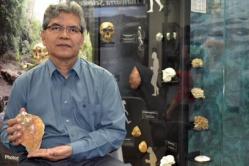 Harimaru cave - Researchers in Indonesia have reportedly discovered the 3,000-year-old remains of 66 people in a cave in Sumatra. The cave is known as Harimaru or Tiger Cave, and also contains chicken, dog and pig remains. Thousands of years ago, the Tiger Cave and other limestone caverns nearby were occupied by Indonesia's first farmers. They used the caves to bury their dead, explaining the 3,000-year-old cemetery unearthed by Simanjuntak's team. The ancient farmers also manufactured tools in the caves. And they apparently made art. Tiger Cave contains the first evidence of rock art from Sumatra, Simanjuntak said. And the cave is only partially excavated. "There are still occupation traces deeper and deeper in the cave, where we have not excavated yet," he said. "So it means the cave is very promising."
Harimaru cave - Researchers in Indonesia have reportedly discovered the 3,000-year-old remains of 66 people in a cave in Sumatra. The cave is known as Harimaru or Tiger Cave, and also contains chicken, dog and pig remains. Thousands of years ago, the Tiger Cave and other limestone caverns nearby were occupied by Indonesia's first farmers. They used the caves to bury their dead, explaining the 3,000-year-old cemetery unearthed by Simanjuntak's team. The ancient farmers also manufactured tools in the caves. And they apparently made art. Tiger Cave contains the first evidence of rock art from Sumatra, Simanjuntak said. And the cave is only partially excavated. "There are still occupation traces deeper and deeper in the cave, where we have not excavated yet," he said. "So it means the cave is very promising."
http://science.nbcnews.com/_news/2013/04/22/17864615-66-ancient-skeletons-found-in-indonesian-cave?lite
USA – 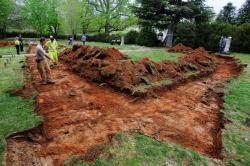 Lynchburg - Lynchburg's historic Old City Cemetery, Virginia's oldest public burial ground, has launched its biggest effort to date to find and identify unmarked graves in its midst. On Friday, a backhoe was brought in to peel back the topsoil along a mysteriously blank patch of grass in the cemetery's Confederate soldier section. Research had suggested there could be about 90 unmarked graves there, likely belonging to soldiers who fell victim to smallpox during the war. Friday's targeted excavation was the largest project of its kind ever undertaken at the cemetery. When the underbelly of the topsoil was revealed, it was quickly apparent there were graves underneath. Lichtenberger, director of cultural resources for Hurt & Proffitt Inc., said the telltale red clay soil, so different from the surrounding ground, was evidence of deep digging that occurred there. The shape of the lines was readily identifiable as grave shafts. Litchenberger now will lead a team in mapping out the burial plots. The remaining work will be done more slowly with shovels and trowels.
Lynchburg - Lynchburg's historic Old City Cemetery, Virginia's oldest public burial ground, has launched its biggest effort to date to find and identify unmarked graves in its midst. On Friday, a backhoe was brought in to peel back the topsoil along a mysteriously blank patch of grass in the cemetery's Confederate soldier section. Research had suggested there could be about 90 unmarked graves there, likely belonging to soldiers who fell victim to smallpox during the war. Friday's targeted excavation was the largest project of its kind ever undertaken at the cemetery. When the underbelly of the topsoil was revealed, it was quickly apparent there were graves underneath. Lichtenberger, director of cultural resources for Hurt & Proffitt Inc., said the telltale red clay soil, so different from the surrounding ground, was evidence of deep digging that occurred there. The shape of the lines was readily identifiable as grave shafts. Litchenberger now will lead a team in mapping out the burial plots. The remaining work will be done more slowly with shovels and trowels.
http://www.newsadvance.com/news/local/article_4c6fa850-aad0-11e2-a9c8-001a4bcf6878.html
INDE –  Uppuguda – The Armenian cemetery at Uppuguda is in a state of utter neglect. Although a listed archaeological monument, no effort has been taken to restore it. The cemetery belongs to the Qutb Shahi period. Mounds of trash and debris occupy a major portion of the three-centuries-old cemetery, which remains hidden amid thick wild vegetation. Armenians came to India as traders through the overland route much before the advent of European traders into India. In fact, they came here seven centuries before Vasco-da-Gama reached India, according to officials. Realising the importance of Armenian cemeteries and churchyards, which are the only attested sources of their presence, the Department of Archaeology has declared it a protected monument under the Archaeological Sites and Remains Act, 1960.
Uppuguda – The Armenian cemetery at Uppuguda is in a state of utter neglect. Although a listed archaeological monument, no effort has been taken to restore it. The cemetery belongs to the Qutb Shahi period. Mounds of trash and debris occupy a major portion of the three-centuries-old cemetery, which remains hidden amid thick wild vegetation. Armenians came to India as traders through the overland route much before the advent of European traders into India. In fact, they came here seven centuries before Vasco-da-Gama reached India, according to officials. Realising the importance of Armenian cemeteries and churchyards, which are the only attested sources of their presence, the Department of Archaeology has declared it a protected monument under the Archaeological Sites and Remains Act, 1960.
http://www.thehindu.com/news/cities/Hyderabad/an-ancient-graveyard-craves-for-public-attention/article4644462.ece
USA – 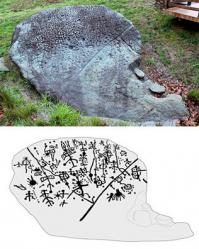
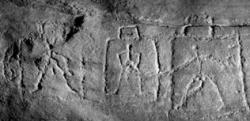 - Carolines - At the prehistoric sites, there are human and animal stick figures, tracks of deer and bear, circles within circles, crosses within circles, and geometric designs totally incomprehensible to 21st-century eyes. At one South Carolina site, several male stick figures are explicitly (and amazingly) sexually endowed. At the same site, a rectangular box with a head and arms and legs sticking out has been dubbed â “Refrigerator Man (or Woman)” by researchers. Age and authorship are generally unknown, though radiocarbon dating of the faded red and yellow pigment on the Paint Rock pictograph on the North Carolina-Tennessee border indicates it was painted 5,000 years ago.
- Carolines - At the prehistoric sites, there are human and animal stick figures, tracks of deer and bear, circles within circles, crosses within circles, and geometric designs totally incomprehensible to 21st-century eyes. At one South Carolina site, several male stick figures are explicitly (and amazingly) sexually endowed. At the same site, a rectangular box with a head and arms and legs sticking out has been dubbed â “Refrigerator Man (or Woman)” by researchers. Age and authorship are generally unknown, though radiocarbon dating of the faded red and yellow pigment on the Paint Rock pictograph on the North Carolina-Tennessee border indicates it was painted 5,000 years ago.
http://www.charlotteobserver.com/2013/04/21/3988034/carolinas-rocks-hold-ancient-messages.html
ROYAUME UNI –  Fulford - Combatants are squaring up to do battle over the fate of a Yorkshire field more than 1,000 years after they say an earlier battle was fought there that helped to change the course of British history. Rival groups have issued a call to arms over the future of what some historians claim is the true site of the "forgotten" Battle of Fulford in September 1066. Local historians are fighting a rearguard action over developers' plans to build 600 homes on a field near York which they say is the site of the historic battle. The Battle of Fulford is where an invading Viking army defeated an Anglo-Saxon force led by the northern earls, Edwin and Morcar. Historians say the battle is important because the defeat forced the Anglo-Saxon king, Harold Godwinson, to march his army north to fight and defeat the invaders at the Battle of Stamford Bridge five days later. Although victorious, Harold's forces suffered losses at Stamford Bridge and were exhausted after the march, and the campaign in the north diverted the king's attention away from the south coast, where William of Normandy launched his invasion. As a result, King Harold's weakened and divided army was subsequently defeated at the Battle of Hastings three weeks later. Some have described the period from Fulford to Hastings as the watershed between the end of the Viking and Saxon age and the http://www.independent.co.uk/news/uk/this-britain/the-battle-of-fulford-war-breaks-out-over-forgotten-yorkshire-battlefield-
Fulford - Combatants are squaring up to do battle over the fate of a Yorkshire field more than 1,000 years after they say an earlier battle was fought there that helped to change the course of British history. Rival groups have issued a call to arms over the future of what some historians claim is the true site of the "forgotten" Battle of Fulford in September 1066. Local historians are fighting a rearguard action over developers' plans to build 600 homes on a field near York which they say is the site of the historic battle. The Battle of Fulford is where an invading Viking army defeated an Anglo-Saxon force led by the northern earls, Edwin and Morcar. Historians say the battle is important because the defeat forced the Anglo-Saxon king, Harold Godwinson, to march his army north to fight and defeat the invaders at the Battle of Stamford Bridge five days later. Although victorious, Harold's forces suffered losses at Stamford Bridge and were exhausted after the march, and the campaign in the north diverted the king's attention away from the south coast, where William of Normandy launched his invasion. As a result, King Harold's weakened and divided army was subsequently defeated at the Battle of Hastings three weeks later. Some have described the period from Fulford to Hastings as the watershed between the end of the Viking and Saxon age and the http://www.independent.co.uk/news/uk/this-britain/the-battle-of-fulford-war-breaks-out-over-forgotten-yorkshire-battlefield-
http://www.independent.co.uk/news/uk/this-britain/the-battle-of-fulford-war-breaks-out-over-forgotten-yorkshire-battlefield-8581504.html
MALTE – 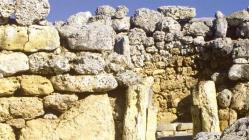 - An archaeological excavation has revealed that human beings occupied Stonehenge in 7,500BC not in 2,500BC, as was previously believed, but Malta’s prehistoric temples remain the oldest in the world. The discovery, a mile away from the world renowned stone circle, reveals evidence of the community that put up the “first” monument at Stonehenge. Carbon dating of material found on site show people were there from 7,500 to 4,700 BC. Anthony Bonanno, an archaeology professor at the University of Malta, said it was “highly interesting” that landscape archaeology revealed evidence of a community dating so far back. “The people living at that time would have been the ancestors of the people who subsequently built the Stonehenge stone circle around 2,500BC.” The archaeological dig, led by Open University archaeologist David Jacques, took place a mile from the Stonehenge stones in an area that was termed as an “archaeological blind spot” because it had never been noticed before. “This archaeological excavation is referring to a settlement that is as far from Stonehenge as Agar Qim is from Qrendi,” explained Prof. Bonanno. This means that the Maltese free standing monuments dating back to about 3,500 BC are still the oldest in the world. Prof. Bonanno pointed out that, so far, there is no evidence anywhere in the world of earlier free-standing monuments, the oldest being at Ta’ Hagrat in Mgarr, with Ggantija in Gozo the first of the larger monuments. The earliest evidence of human activity in Malta dates back to about 5,000BC in Skorba, where evidence of a Neolithic village “including a hut and a wall” dating back to 5,000 to 4,000BC has been unearthed.
- An archaeological excavation has revealed that human beings occupied Stonehenge in 7,500BC not in 2,500BC, as was previously believed, but Malta’s prehistoric temples remain the oldest in the world. The discovery, a mile away from the world renowned stone circle, reveals evidence of the community that put up the “first” monument at Stonehenge. Carbon dating of material found on site show people were there from 7,500 to 4,700 BC. Anthony Bonanno, an archaeology professor at the University of Malta, said it was “highly interesting” that landscape archaeology revealed evidence of a community dating so far back. “The people living at that time would have been the ancestors of the people who subsequently built the Stonehenge stone circle around 2,500BC.” The archaeological dig, led by Open University archaeologist David Jacques, took place a mile from the Stonehenge stones in an area that was termed as an “archaeological blind spot” because it had never been noticed before. “This archaeological excavation is referring to a settlement that is as far from Stonehenge as Agar Qim is from Qrendi,” explained Prof. Bonanno. This means that the Maltese free standing monuments dating back to about 3,500 BC are still the oldest in the world. Prof. Bonanno pointed out that, so far, there is no evidence anywhere in the world of earlier free-standing monuments, the oldest being at Ta’ Hagrat in Mgarr, with Ggantija in Gozo the first of the larger monuments. The earliest evidence of human activity in Malta dates back to about 5,000BC in Skorba, where evidence of a Neolithic village “including a hut and a wall” dating back to 5,000 to 4,000BC has been unearthed.
http://www.timesofmalta.com/articles/view/20130420/local/Despite-Stonehenge-find-Malta-s-temples-still-oldest-oldest.466271